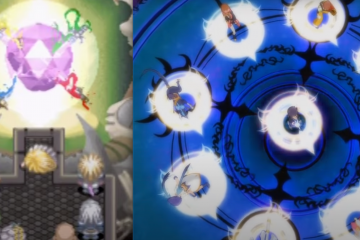
The following is part of Now Loading, a series that renders verdicts on whether or not your favorite video games deserve a place in the canon of works that have contributed to video-game storytelling in landmark ways. Read the series’ full mission statement here.
Sound the Sirens
Ladies and gentlemen, have you seen a little girl? Short, black hair, she just turned seven last week. I’ve been in something of a fog recently, and I can’t quite put my finger on the reason why. There are memories, of course, but they’re all jumbled up like a jigsaw in my mind, and every time I think I’ve found two pieces that fit together, everything gets a little blurrier and I’m right back where I started.
That’s right…like a puzzle that’s all corner pieces. I think it all began—

—and welcome to this spooky month of entries into Now Loading…The Video Game Canon! The only series that takes a look at video games from the past and determines whether or not they should be lauded in the future. I, like most of the Internet, am just a natural-born sucker for October and all the creeps and crawls associated with Halloween. So, I thought it might be a laugh to dedicate some of the entries in this series to analyzing spooks and scares, and all the interesting tidbits we can fish up from the black and inky depths of the survival horror genre! In particular, I would like to take a deep dive into one of survival horror’s seminal series by taking our own trip to Silent—
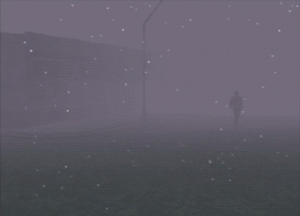
This may sound really off the wall, but listen to me. You’ve got to believe me. I’ve not gone crazy, and I’m not fooling around. At first I thought I was losing my mind. But now I know I’m not. It’s not me. This whole town—
—Hill! Initially released for the Playstation One in 1999, the Silent Hill series has had a tremendous impact not only on the survival horror genre of video games, but also on video game culture itself. Its striking visuals, bold storytelling, and intensely frightening atmosphere have stood the test of time laid the groundwork for many of the most terrifying video games released in recent years. Set in a quaint, American town—
A world of nightmarish delusions come to life! Little by little the invasion is spreading—
—beset by a history as shrouded in mystery as the landscape is by fog, the development team at Konami, aptly named “Team Silent,” knocked it out of the park so well with the first entry into this series that the sequels enjoyed even more success than the original, making the existential, personal hellscape that is the town a much-beloved destination for fans of the survival horror genre. And while the Silent Hill series in many ways exemplifies the perfect way to construct an immersive horror experience, they also offer deeply philosophical, nuanced examinations of the darker parts of the human mind. It’s all well and good to laud a game for having the courage to tackle something as heavy as depression, but the first entries into the now massive Silent Hill franchise took these deep premises and ran with them, exploring topics like guilt, trauma, abandonment, pain both physical and emotional, how your own understanding of your past can literally warp your perception of the world around you—
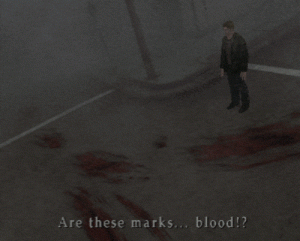
like monsters
—to the point that you can’t reconcile your own personal demons from the ones chasing you down the foggy streets of that quaint American town. In my opinion, every modern horror game dealing with such heavy themes—like LISA, SOMA, and countless others—owe a great deal to the folks over at Team Silent, who brought us such brilliant additions to the interactive visual medium.
And so, as a sort of homage, I will be devoting the Canon this month to looking at the first four entries of the Silent Hill series. I felt it fitting not only because there are four weeks to play around with, but also because it was these first four games that were developed by the original group at Team Silent, and, while series regular and music composer Akira Yamaoka had his fingers in later Silent Hill pies, most fans would agree that there was a major shift both in tone and quality following the break-up of Team Silent after Silent Hill 4. So without further ado, let’s ring those sirens and jump into the first installment of the series—

Story and Characters: An Everyman and His Daughter
While the themes explored through its narrative are endlessly complex, the basic plot of Silent Hill is fairly simple. Now, that’s not to say that it is without quirks or eccentricities—we are, after all, discussing a game in which a demented, demon-worshipping cult is attempting to birth its unholy god into our world by inflicting untold amounts of physical pain onto a small child.
But I’m getting ahead of myself. At its core, Silent Hill is about a father’s love for his daughter, and how he will quite literally go through hell and back again to find and protect her.
We open on our avatar, Harry Mason, and his daughter, Cheryl, driving along a long and lonely road through heavy snow and thick fog. With the recent death of his wife, Jodie, Harry is taking his grieving daughter to the resort town and favorite family vacation spot, Silent Hill, so that they can try to put the past behind them and move on from the recent tragedy as a family. While Harry is focusing his attention on the road, he is baffled by the vision of a young girl who looks strikingly like his daughter running into the middle of the road. In his confusion, he swerves the car, wrecking it in the process. He realizes after awakening from the crash that his daughter is not in the car with him; in a panic, he leaves the smoking wreck and walks through the mist towards Silent Hill.
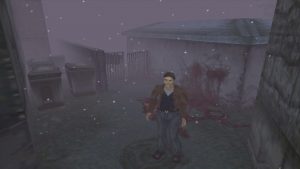
The fog only seems to thicken as he makes his way to the center of town, whereupon he realizes that there is not a soul to be found anywhere. The only noise that can be heard is that of his footsteps crunching the snow beneath him, and the only sign that anyone is around is the various cars parked along the streets and in people’s driveways.
As Harry continues to explore, he enters an alleyway with nothing but a lighter to guide his way. He continues deeper into the alley, eventually coming against a chain-link fence with what looks like a horrifically crucified child bound and cuffed to the fence behind it. As an old air raid siren sounds in the distance, Harry turns around in abject horror to a group of ghoulish, gray, featureless children holding knives closing in on him. Harry tries to escape, but they outnumber him, and as he is backed against the fence with the sacrificed child hanging from it, he succumbs to their onslaught and—
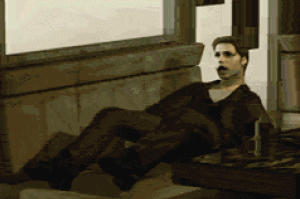
Wakes up in a diner. That horrible vision of the otherworldly monster children was seemingly only a dream, and yet he doesn’t quite remember finding this diner on his own… Oh well. Before he is able to put more than a moment’s thought into it, he is greeted by Officer Cybil Bennet from the nearby town of Brahms. Cybil explains that she was passing through Silent Hill on one of her patrols, and after seeing the wreckage from Harry and Cheryl’s crash, she too began investigating the town. Eventually, she came across Harry’s unconscious body and brought him to the diner, waiting for him to wake up so she could do a bit of an interrogation. What was he doing in town? What caused him to crash? And who was this “Cheryl” he kept asking about?
After Harry tells Cybil that he’s trying to find his missing daughter, she agrees to help him, and gives him a handgun. Whether this is standard police practice in Brahms isn’t a question that occurs to Harry, and after his encounter with the demon children in the alley, he’s not going to be asking it anytime soon. They part ways, and, as Harry continues to explore the now monster-infested town of Silent Hill, he encounters a strange, old woman named Dahlia Gillespie, who tells him that the little girl he saw in the middle of the road who caused the crash is actually a terrible demon, and wouldn’t he use this nifty, pyramid-shaped box called the Flauros to go and capture her? Harry agrees, perhaps because he believes it a good thing to stop demons, but mostly because Dahlia told him that, if he didn’t stop this creature, his daughter would die a horrible death.
A-demon-hunting we shall go, then!
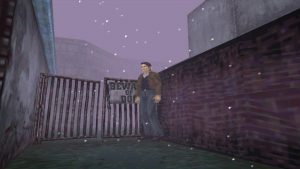
After “capturing” the “demon” in the Flauros, Dahlia reveals that the demon girl is actually her daughter Alessa, who was immolated and impregnated with the soul of a terrible demon god, which Dahlia and her creepy friends, Doctor Michael Kaufmann and Lisa Garland (along with a fair deal of the townspeople), wanted to summon into Silent Hill for… reasons, I’m sure. That’s the problem with demonic cults: they have everything up to summoning the demon down to a T, but when it comes to what they want from it or how they’ll keep things going post-summon, they’re pretty useless.
So yes, seven years prior to the events of Silent Hill, Dahlia and company burned Alessa in the hopes that her intense and immeasurable pain would be a way for their god to enter our plane of existence. What happens next is a bit confusing, so I will break it down as simply as I possibly can:
Alessa was burned terribly, and yet did not die because she was the chosen “vessel” for this evil deity. While this vesselhood rendered her virtually immortal, she was still very capable of feeling the very real pain that comes with being burned alive. This pain, coupled with the torment she endured under the careful watch of Doctor Kaufmann and his nurse, Lisa Garland, formed in Alessa a hatred so palpable that it became manifest in the town, revealing itself as the various monsters and demons you encounter throughout your travels in the fogged up town. The rusted, bloodied “Otherworld” that you enter when the sirens sound is the deepest part of Alessa’s tortured mind, where the very worst of her fears and demons are able to physically appear due to this demon god’s influence.
But what in the world, I hear you asking, do Harry Mason and his daughter Cheryl have to do with any of this craziness?
Well, Dear Reader, it turns out that, when Dahlia and pals burned her daughter alive to birth an evil pain god into our world, Alessa resisted just enough that her soul was split into two halves. There was the perpetually tortured girl being kept alive in Silent Hill, and there was Cheryl, who had been adopted by Harry and Jodie Mason and went on to have a relatively happy seven years until she and her father were literally called back to the town via a spell that Dahlia had placed on Alessa’s charred body all those years ago.
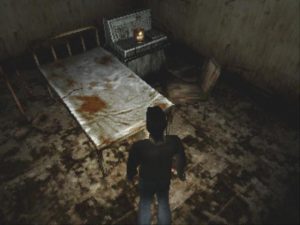
In the canonically good ending of the game (there are 5 possible endings), Alessa is allowed to birth the evil pain god, Harry destroys it, and Alessa and Cheryl revert back to a single baby as Silent Hill crumbles around them. Harry grabs the child and leaves the town as fast he can, never to look back. Until, that is, they feel that call again…
The story suffers a bit by being needlessly complex with all the creepy cult involvement, but as I said before, the core story of a father desperately wanting to protect his daughter remains intact throughout all the craziness that Silent Hill’s plot throws at you. The grander theme of this first game is that of parental love and devotion, and how a child’s upbringing can affect the world around it. We are presented with Harry Mason, a simple man on a mission to protect his daughter, facing off against Dahlia Gillespie, a haggish, crazy woman who viewed her own daughter as nothing but a lamb to the slaughter, a tool to be used for her own devices. As we will see this month, each entry in the Silent Hill series explores a different type of hell, and this first game’s hell is that of a child growing up with a parent who has no regard for them, and who will inflict horrible, painful things on them just…because. In that sense, the true terror of Silent Hill is in its exploration of abuse, and how the most horrifying thing about it is that, sometimes, it just happens for no reason.
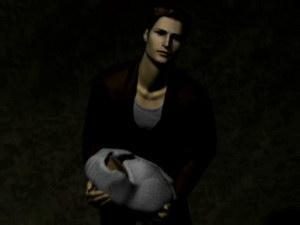
Silent Hill has a relatively small cast of characters, but each of them provides a valuable piece of the storytelling puzzle that ties the theme together so well. The writers of this game have a clear grasp of writing up to the theme, and as such each and every character plays a key role in the game’s exploration of abuse and neglect.
Let’s begin with Lisa Garland, the nurse who was just taking orders and keeping Alessa alive in her torment because it was simply her job. We meet Lisa a number of times throughout the story, and we can see through her actions and demeanor that, despite her surroundings, she is actually quite a loving, caring individual. It would make sense, then, that we see her solely as a representative of her profession: a nurse. She works directly under Doctor Michael Kaufmann, head of the Alchemilla Hospital in Silent Hill, and has had a close connection to Alessa since her being admitted into the hospital seven years ago. When she describes her work with the child, she genuinely seems as if she cares for her patient, and would do anything to make her feel better.
And yet, there is always something nagging at Lisa Garland, something behind her eyes and hidden in her quivering speech, that gives away that she knows the truth behind Alessa. Somewhere in her mind, she knows that she is helping to perpetuate the abuse being inflicted on this young child, and, were it not for the drugs she habitually takes to calm her nerves, she just wouldn’t be able to bear it. This is made absolutely clear to the player when we realize she is in fact being blackmailed by Doctor Kaufmann to keep treating Alessa—otherwise, those drugs that keep her calm will stop coming to her. Fearing withdrawal and perpetually wanting to please Kaufmann, she continues to comply with the violence against a child. Lisa Garland is that all-too-common component of the cycle of violence: the unwilling participant, too weak to do anything.
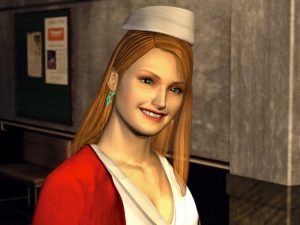
Next is Doctor Michael Kaufmann, whom I barely mentioned in the synopsis because I feel the visceral need to lambast him right here. Kaufmann, for my money, is the most despicable character in the entire series, second only to Dahlia Gillespie herself. Kaufmann is the type of man who acts solely for selfish reasons, and the moment it seems like well has run dry, he turns coat and attempts to flee the whole operation. That may be fine for your standard Joe Cultist, but Kaufmann isn’t just the man who issues the orders to keep Alessa alive and in a constant state of pain: he is also the one manufacturing and distributing the drug to which so many of Silent Hill’s denizens, including Lisa, are addicted. He is a slimy, manipulative man through and through, and has lent his medical “talents” to innumerable atrocities that have taken place since Alessa’s first burning. His disdain for those he treats is only a small drop in the ocean of his vileness, and he represents the sociopathic abuser committing terrible acts solely for personal gain.
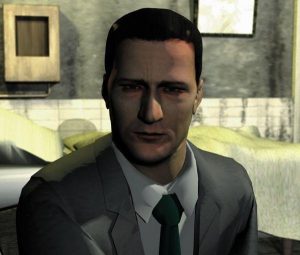
Something that I will touch on later is how the horrors of Silent Hill are all depicted through the mind of an abused child; and, with a mother like Dahlia Gillespie, it’s no wonder Alessa’s mind is a perpetual hellscape from which there is no respite. Dahlia is a textbook monster of a human being, willing to completely mutilate her own child for her own selfish purposes. Despite this game being full of haunting music and horrible, demonic creatures, there is one scene more terrifying than all of the spooky ambiance of the town and monsters combined: it’s the scene where we see a cold, determined Dahlia literally dragging a crying Alessa out of her room before burning her alive. Alessa cries, begs her mother not to do this to her, and all Dahlia can say is how lucky her daughter is to be a part of this ritual.
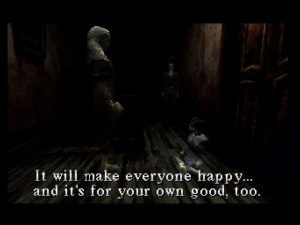
In stark contrast to Dahlia Gillespie is Harry Mason, a man so selfless that he literally traipses through hell just to get his daughter back. Neither shifting hellscapes nor Lovecraftian horrors stop him in his quest to find his little girl and ensure that no harm comes to her.
After considering the antagonists in this game and all of their horrible, abusive tendencies, it is no wonder that the avatar in Silent Hill is someone who seems virtually incapable of raising a hand to his child, let alone putting her through the mental and physical anguish that the people of Silent Hill put Alessa through. Harry is always pitched as an everyman type, which is brilliant for two reasons:
- If you’re going to be playing a horror game, you want your avatar to be as generic—and, therefore, easy for a player to identify with—as possible.
- In a town populated solely by vicious abusers, all it takes to be a hero is to want to protect your child.
Harry Mason shows us that you don’t need to be a buff, quipping superhero to stop abuse. All it takes is an everyman who loves his child.
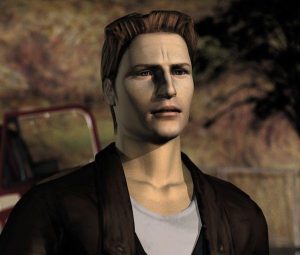
Gameplay, Music, and Visuals: A Game Made Better by Limitations
Now that we have explored the story and characters of Silent Hill and how they all relate to the overall theme of abuse, let’s take a look at how the game itself aligns itself with that theme. Silent Hill, along with Resident Evil before it, essentially established the genre we call “survival horror.” A survival horror game is one in which you are dropped into a scary world with limited resources, limited capability, and, in Silent Hill’s case, limited visibility.
As we have discussed, Harry Mason is what you would call an everyman character, meaning we would expect him to react to a horrifying situation much like we would. Unlike other video game protagonists, he isn’t a weapons expert or a martial artist, and he doesn’t have some hidden super power that renders the game’s enemies vulnerable or helpless. Conversely, it is his inexperience with combat, weapons, and generally stressful video game situations that make him—and consequently you—the weak one beset by all the terrors of the world. The gameplay of Silent Hill, therefore, leads you more in the direction of exploration and less in that of combat.
Sure, Harry can swing at monsters with his melee weapon or blindly shoot into the darkness, occasionally hitting something, but his novice shooting skills coupled with the strength and viciousness of the monsters makes running away a more prudent choice most of the time. And while this may seem silly, it is a fundamental component in making a successful horror game. After all, a survival horror game promises to scare you, and one way to do that is to make you dread having to go up against a monster. What better way to make you fear the enemies than making them nearly impossible to beat?
As such, Silent Hill’s main gameplay components are its puzzles and exploration, with you navigating around the town trying to find the next convoluted piece to the next confusing puzzle, hoping against hope that you will be able to pass through a previously locked door or gate so that you can continue in your search to find Cheryl and unravel the greater mysteries of the town. This often results in finding clue after clue, marking your map, and then backtracking to certain areas while avoiding the deadly creatures trying to end your life. Between Harry’s weakness and the confusing nature of the town, Silent Hill does an excellent job in making the player feel as if they were in the situation in which Harry has found himself.
When it comes to visuals, it must be said that most of the character models, monsters, and even backgrounds simply have not withstood the test of time. Early 3-D was a fickle mistress, especially for the PlayStation One back in 1999, and while most of the computer-animated cut scenes still look fairly good, the in-game graphics are blocky, ugly, and frankly underwhelming by modern standards.
And yet, in a strange way, that actually helps with the scare factor of the game. In any other genre, these blocky character models would be off-putting in a big, bad way, but off-putting is the horror genre’s bread and butter. The strange, out-of-place designs of humans make them look like monsters, and the monsters even more so. I suppose that, in that way, the only one who really suffers from this polygonal curse is Harry, since it becomes a little harder to identify with a character when he looks like he just walked out of the uncanny valley.
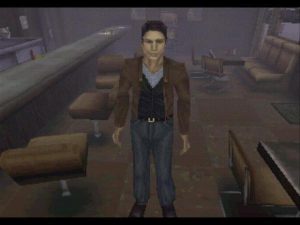
On the whole, however, these limitations do wonders for Silent Hill’s unsettling atmosphere. In fact, it was limitations that gave the game its signature foggy look that has since become a staple of the series aesthetic. The fog and mist that shroud the town wereplaced into the game because the PlayStation was incapable of rendering more than one part of the town at a time. To get around this, the geniuses over at Team Silent decided to put a thick fog over the town so that the player could only see so much of what was in front of Harry’s face at a time. This led to always wondering about what was lurking in the fog, and made the entire experience of exploring Silent Hill even more disturbing.
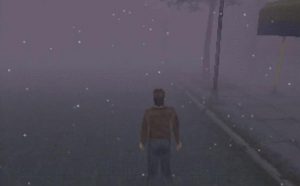
Finally, I would be remiss—not only as a video game analyst, but also as a lover of video game music—not to praise the amazing soundtrack of Silent Hill. Composed by series regular and eventual executive producer, Akira Yamaoka, Silent Hill is elevated from brilliant game to absolute masterpiece with its industrial ambient music, which does just enough to put the player on edge. The music that plays as you’re traversing the town transitions from off-kilter humming to loud, ghoulish clanging of metal and gears, giving the player the sense that the town itself is wrenching from its foundations to lunge at the player. Not to mention the various themes that play at different points in the game, from the haunting Spanish guitar in the “Silent Hill Theme,” to the chilling piano in songs like “Tears of…” that do their part to completely flesh out the melancholy world of Silent Hill.
Silent Hill is one of those games whose gameplay, graphically limited visuals, and brilliantly composed music beautifully coalesce to make the emotional moments that much more palpable, and the scary moments that much more terrifying.
Impact on Gaming and Culture: Town…What’s going on with that town?
I want to be uncharacteristically brief in this section, as I will be writing four of them over the coming weeks and don’t want to risk repeating myself too heavily, so let me simply discuss the impact that this game had on its immediate successors, rather than its overall effect on video gaming culture.
Silent Hill was the perfect launch pad for a laterally moving series. That is, while the characters in the game were all excellently written and the themes of abuse and neglect were brilliantly explored, they didn’t necessarily merit sequels that continued to flesh out those themes. Those themes were already fully explored in this first game, and so to have a direct sequel be a direct continuation of the story of Dahlia and Alessa might have run the risk of stagnating the franchise. As such, Team Silent realized that it was the town itself that was worth exploring in future installments. So, unlike the Resident Evil series, which kept up with the main characters from the first game, Silent Hill sequels further explored the town itself, and what it means to be trapped in a nightmare of your own making.
The game, after all, is called Silent Hill, so why not just keep going back to that hellish town to see what else happens there? Is all the terror birthed from Alessa and her ordeal, or is there something more sinister at work in the town that manifests man’s darkest, most personal fears?
Well, stay tuned, Dear Reader, and see just what kind of impact this series would come to have on the interactive medium of video games.
BONUS LEVEL: Monster Design
Instead of looking at a certain scene, piece of music, or character moment, I will be looking at something that would become a staple of the Silent Hill series for years to come: brilliant monster design. As you may recall from my constant talking about it in the previous sections, Silent Hill is a deeply psychological game which tackles things like child abuse and neglect very viscerally, and one way that it does that is through symbolic monster design. The monsters that plague the town are all born directly from Alessa’s tortured mind, and are all in some way related to a past trauma of hers.
Take the grey children, for example, which are those ghoulish kids that swarm Harry at the beginning of the game. They’re faceless little monster children, prancing around, knives in hand, ready and willing to poke and prod at anything any chance they get. In Alessa’s mind, these are how her schoolmates appeared to her. They were tiny sadists who refused to even think about helping her, and were just further proof that this whole town was out to get her from the start.
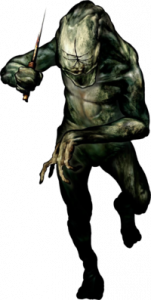
Then there are the air screamers and nightflutterers that resemble dinosaurs with their sinewy wings and vicious beaks, pecking and clawing at Harry. Unlike the grey children, which were dark reflections of the people Alessa knew in her life, these monsters are taken from drawings she made during various therapy sessions with Doctor Kaufmann. We see through these little buggers that Alessa has the ability not only to produce manifestations of her warped perceptions of people, but also to literally bring life to her creations and set them loose on the town.
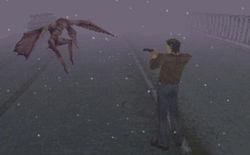
Again, this series is going to delve much more deeply into the idea of these monsters of the psyche made manifest, but this first entry into the Silent Hill series introduced the terrifying idea of being forced to confront those monsters we imagine for ourselves in our own heads. Enemies in horror games before Silent Hill were just the typical spooks and creeps that you would find in any run-of-the-mill horror movie: scary simply because they were scary monsters. But in this game, you are put into a world where monsters are made of deep, personal fears, and to face them alone is a concept that utterly, truly terrifies.
VERDICT: Ooky Spooky Canon Toonies
I must admit that I have been letting a great deal of video games into the Canon lately, and I must further admit that Silent Hill is no doubt going to be one of them. With its unsettling atmosphere, incredibly horrifying exploration of abuse, and brilliant score, this game is not only a solid first entry into a fantastic horror series, but also a wonderful standalone game that laid the foundations for much more psychological entries into the survival horror genre to find success. And so it is with great pleasure that I welcome Silent Hill into the Video Game—
In my restless dreams 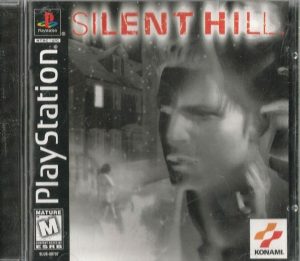
i see that town


